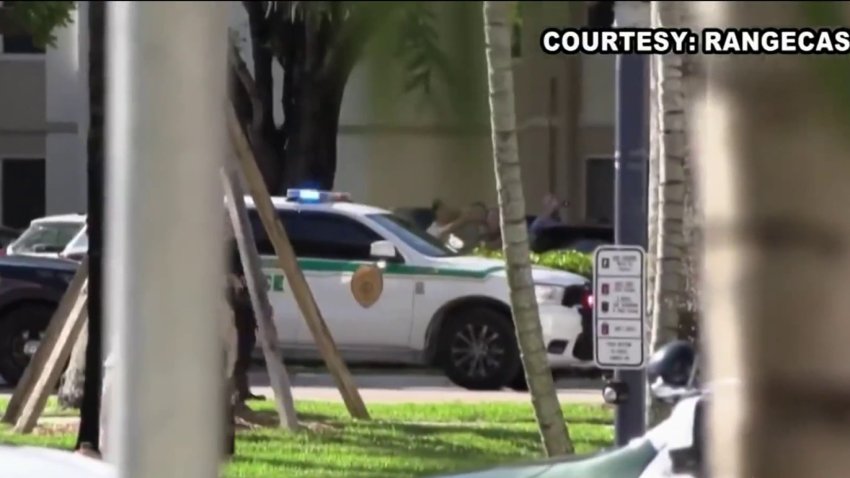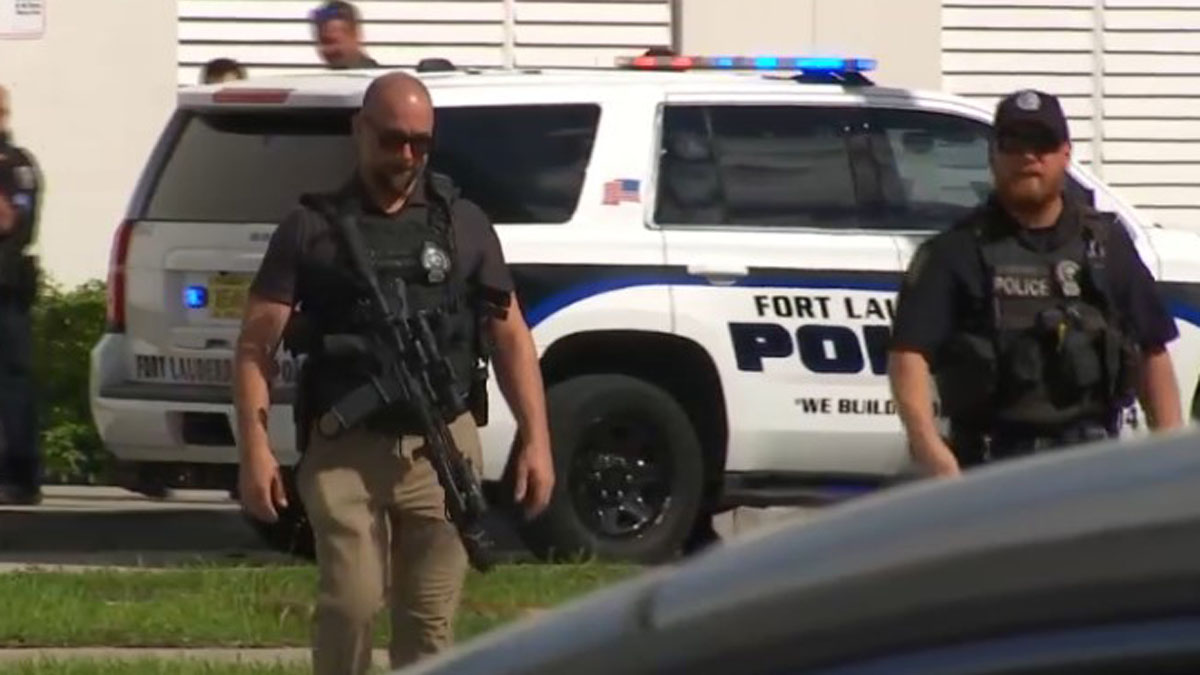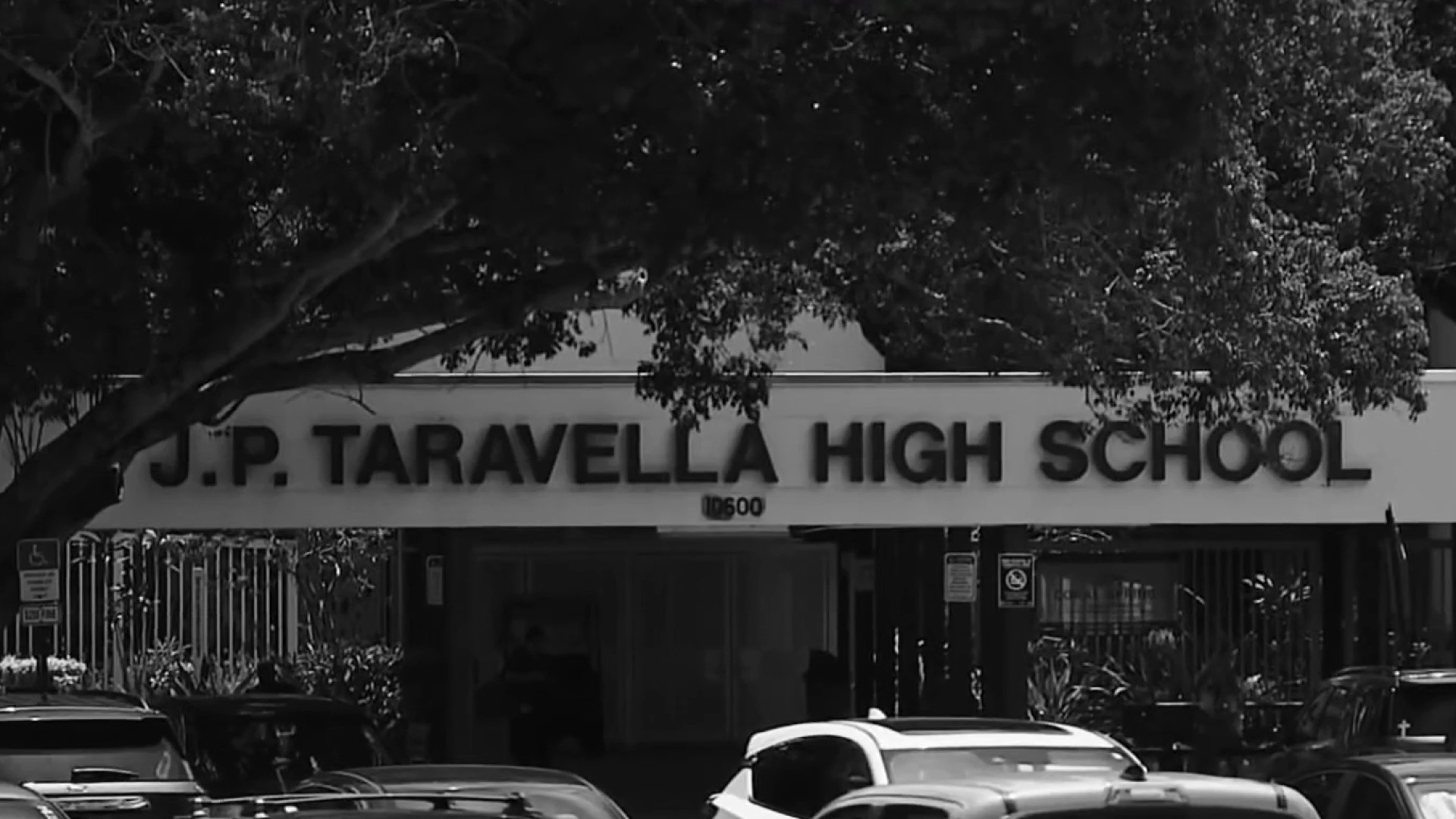Police were responding to swatting calls at multiple South Florida college campuses. NBC6’s Ryan Nelson reports
Police were responding to swatting calls at multiple South Florida college campuses Tuesday morning.
The incidents began with a report of a false active shooter at Florida International University's main campus in Miami-Dade.
Watch NBC6 free wherever you are
Police swarmed the campus and evacuated multiple buildings before determining the report was a hoax.
Though no one was injured in the chaos sparked by the fake calls, they created a scare in the community.
Get local news you need to know to start your day with NBC 6's News Headlines newsletter.
The hoax comes in light of a spate of threats and false reports of shooters pouring into schools and colleges across the country for months.
As swatting raises concerns among law enforcement and elected leaders, here's what you need to know about the dangerous hoax:
What is a swatting call?
Hundreds of cases of swatting occur annually, with some using caller ID spoofing to disguise their number.
Swatting is a hoax that involves making false 9-1-1 calls to provoke large responses by law enforcement groups, such as SWAT teams — hence the name.
According to the FBI, "swatters" often make fake reports of hostages about to be executed or bombs about to go off. Calls made about schools also sometimes report a fake active shooter.
These calls place the community in danger as responders rush to the scene, taking them away from real emergencies, the FBI said. The officers and first responders are placed in danger as unsuspecting residents may try to defend themselves.

How and why did swatting begin?
According to the Anti-Defamation League, these calls are often made to a target's residence or place of work to harass and intimidate them.
Swatting garnered attention in online communities associated with video games. According to the ADL, some gamers targeted their rivals by calling 9-1-1 during an opponent's live stream so they could watch online while a SWAT team conducted a raid on the victim.
Though the FBI has been aware of swatting for over a decade, the ADL says it appears to be on the rise in recent years.
An FBI official said in November that they believe the wave of false threats focused on schools may be coming from outside of the country.
Officials said at the time that they had identified calls to about 250 colleges, 100 high schools and several junior high schools just since early June falsely reporting explosive devices being planted at the schools or saying that a shooting was imminent.
SWATTING
Is swatting a felony?
In the state of Florida, swatting is considered a third-degree felony when the swatter knowingly gives false information to a law enforcement official about the alleged commission of a capital felony.
However, if the swatter is knowingly giving false information about the alleged commission of a crime that is not a capital felony, they are committing a first-degree misdemeanor.
Why is swatting so serious?
Even though the claims are false, swatting has proven to be dangerous and even outright deadly.
In 2017, a police officer in Wichita, Kansas, shot and killed a man while responding to a hoax emergency call that began as a feud between two online gamers.
Police in Maryland also shot a 20-year-old Maryland man in the face with rubber bullets after a fake hostage situation was reported at his home.
Because officers take these calls seriously, another danger of swatting is that it takes authorities away from real crimes by leading them to false ones.
For this reason, authorities grapple with the false alarms in a country where mass shooters have killed hundreds of people throughout history.
Shooters have attacked in places like stores, theaters and workplaces, but it is in schools and colleges where the carnage reverberates perhaps most keenly.



